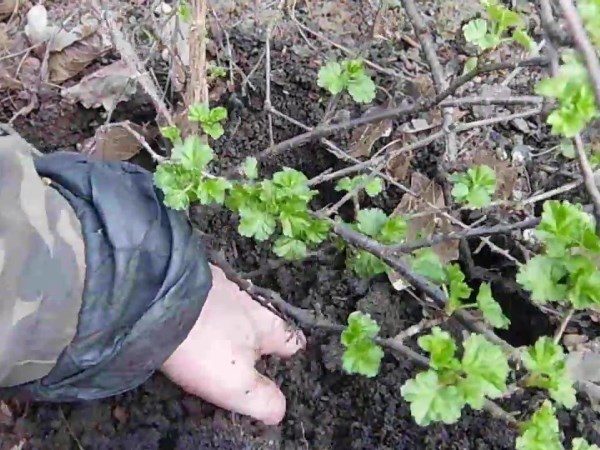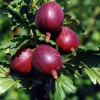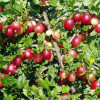Gooseberry "Commander": description and features of the variety
Content
Description of the variety
The plant of this variety forms a bush of medium height, about 1.5 m. The description of external characteristics is as follows: branches and side shoots grow densely, have a slightly spreading nature, a curved shape and a light green color.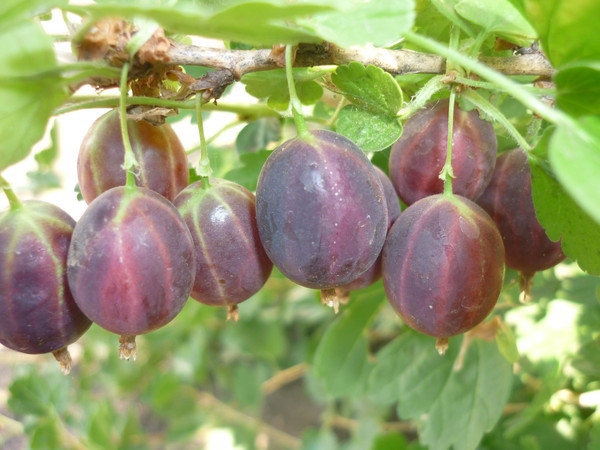
The Komandor variety is characterized by the absence of thorns, sometimes individual single thorns may appear, but they are extremely thin, therefore they are not dangerous. The variety has a glossy foliage surface, and the leaves themselves are quite large and dense. Gooseberry Commander has green stalks of medium thickness. The plant forms medium-sized flowers, slightly yellowish. The bushes of this variety are characterized by high resistance to various diseases, including fungal ones, as well as to low temperatures. The Komandor variety has excellent taste, but not too large berries.
Video "Description of varieties"
From the video you will learn about the features of gooseberry varieties.
Landing features
For bushes of this variety, it is better to select those places where there is enough sunlight, the wind does not walk. The variety also does not like excessive moisture - do not plant bushes in wetlands or lowlands. Soil with high acidity will not work either.
The description of the optimal conditions for planting is as follows: seedlings planted in the spring before the leaves begin to bloom, or in the fall, until mid-October, take root best. This choice of periods is due to the fact that, like any plant, the Commander gooseberry must have time to take root before the onset of cold weather or the active growth phase.
Immediately before planting, the seedling must be cut so that no more than 5 buds remain on it. In order for a bush of this variety to take root faster, before planting in a permanent place, the roots of the seedling are soaked for 24 hours in a solution of potassium humate - 1 tablespoon of the substance is needed for each liter of water.
Plant care
The description of the process of caring for a developing seedling is not much different from the generally accepted rules of agricultural technology for shrubs:
- regular hilling - the variety prefers loose soils, thanks to which air circulation and its access to the root system are improved, as well as weeds are destroyed;
- high-quality watering - gooseberry bushes of this variety are not able to develop normally if they are not provided with a sufficient level of moisture. So, if the weather is dry, then it is better to water the gooseberries weekly;

- mineral feeding is also required. The Komandor variety shows itself well when fed three times a day: as soon as the first leaves appear, during the flowering period and at the time of the formation of the ovary;
- formative pruning. This procedure for bushes of the Komandor variety will be needed from the second year after planting. At the same time, it is carried out twice: in the spring, before the buds begin to swell, and in the fall, when all the foliage has already flown around. For this variety, two methods of forming a bush are applicable - standard and trellis.In the first case, the bush takes the form of a tree, but its life expectancy decreases, in the second, the gooseberry does not look so aesthetically pleasing, but it bears fruit better and lives longer;
- preparation for wintering. Due to its frost resistance, the variety does not need the construction of a protective shelter, but it is still worth preparing the bush for the cold weather. Around each bush, they carefully dig up the earth and mulch it with a layer of humus or peat. Some gardeners prefer to play it safe, and still cover the plant with agrospan.
Diseases and pests
The cultivar is considered to be of low vulnerability to the most common problems - sawfly, powdery mildew and anthracnose, but may suffer from other problems:
- drying out of the stems - the bark cracks and dies on the bushes. Unfortunately, a diseased plant cannot be saved. In order to prevent the development of the problem, be sure to treat the sections of the seedlings with a weak solution of the Bordeaux mixture;
- rust - in this case, the flowers and ovaries from the lower side are covered with a kind of yellowish pads. As a prophylaxis, young bushes, in the leaf blooming stage, are sprayed with a 1% solution of Bordeaux liquid;
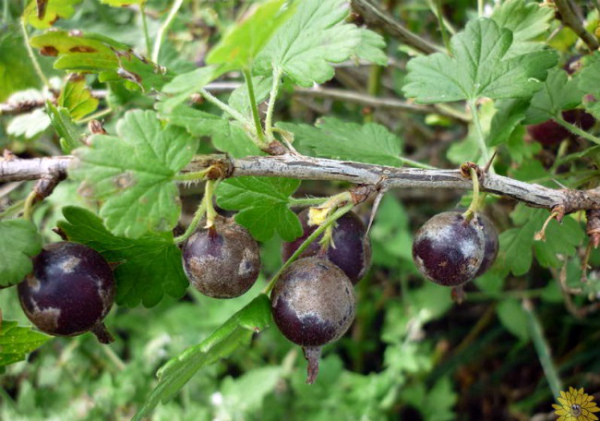
- aphid. Colonies of pests that have settled on gooseberry bushes are able to completely stop the development of the plant and provoke its death. As control measures, the bushes are sprayed with Decis solution, treated with wood ash or tobacco solution;
- shield. In the process of the insect's vital activity, characteristic spots are formed on the plants, resembling splashes of lime mortar. Quite good results in the fight against the scabbard are brought by the drug Actellik.
Harvesting
The variety begins to actively bear fruit by mid-July - on average, about 5 kg of berries can be harvested from each bush. The berries must be plucked together with the stalk, otherwise the peel may be damaged.
Harvesting is best done in dry weather, in the morning or in the evening, when no dew has fallen on the plants.
Video "Growing"
From the video you will learn about the secrets of growing gooseberries.

